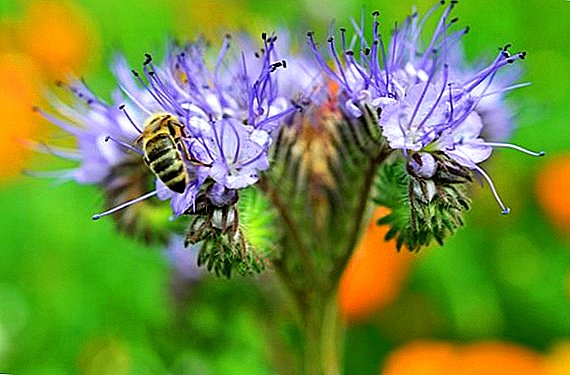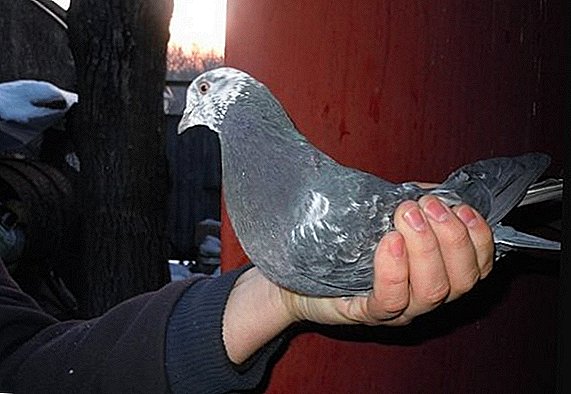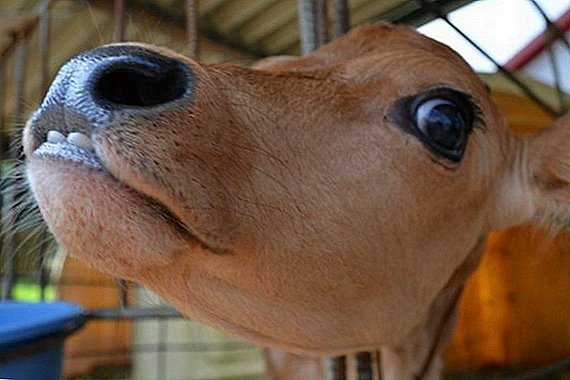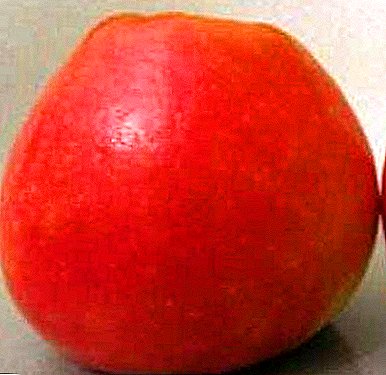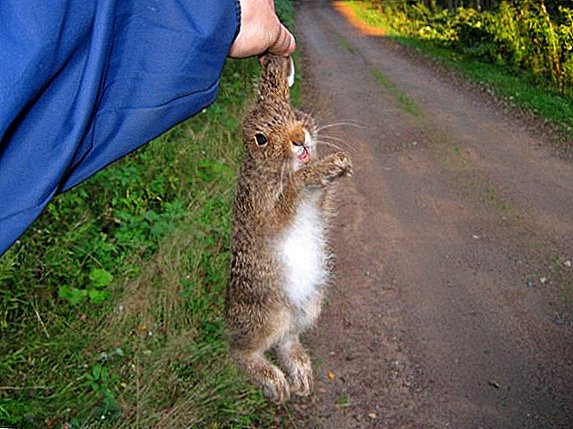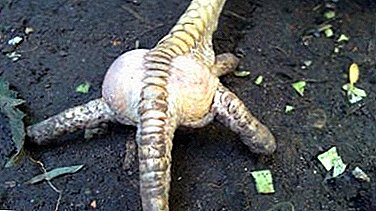
Many amateur poultry breeders breed chickens in their plots. This most popular poultry is unpretentious, tenacious and very useful in the economy. However, even chickens are subject to various diseases.
This article will discuss the symptoms of diseases affecting the bird's musculoskeletal system, including the legs, as well as learn how to quickly identify the disease or another and quickly respond to
Causes of disease
Among the causes contributing to the occurrence of various diseases of the feet in chickens, can be listed Three main factors:
- wrong content;
- limb injuries;
- lack of vitamins in the diet and heredity.
In conditions of crowded, close housing, the probability of development of limb pathologies in both chickens and adult birds greatly increases. Chickens are very mobile birds, moving mainly on their paws. In the daytime, birds constantly need to move and “knead” their paws, otherwise the risk of problems with joints increases.
Non-observance of cleanliness in the hen house and on walking, clogging of the surface with dirty litter and various debris contributes to the development of infectious diseases (such as scabies) and traumatic pathologies. Should remember that Chicken feet are quite easily injured by various hard debris and threads.
Insufficient content of vitamins of group B, vitamins A, D and E can both become an independent cause of the development of diseases and aggravate the influence of other factors. Avitaminosis is especially dangerous because it always affects not only the musculoskeletal system, but also other organ systems. This significantly affects the quality of life of chickens.
Reference! Certain pathologies (eg, curvature of the fingers) can be transmitted as a hereditary disorder. In order to exclude the further influence of the genetic factor on the herd, it is necessary to remove the sick bird from breeding.
Common paw ailments and their treatment
Gout
 Gout is a disease that occurs as a result of a metabolic disorder, or more precisely, a protein metabolism. A characteristic pathology is the accumulation of uric acid salts in the joints and muscles.
Gout is a disease that occurs as a result of a metabolic disorder, or more precisely, a protein metabolism. A characteristic pathology is the accumulation of uric acid salts in the joints and muscles.
Often the cause of the disease becomes improper diet, low mobility of the chicken, as well as the presence of mineral fertilizers for plants in the feed.
Symptoms
Symptoms of gout in a chicken include:
- lethargy, apathy and inertia of the bird;
- the occurrence of tumors, seals and growths in the joints of the paws, the gradual deformation of the extremities and the reduction of joint mobility.
Treatment
The basis of the treatment of birds for gout is the normalization of metabolism and the excretion of uric acid salts from the body. It is necessary to reduce the protein diet, conduct a course of treatment with the drug "Atofan".
Also for two weeks it is recommended to give the bird baking soda, based on the calculation of 10 grams per individual.
Chicken limp
Under this name there is a whole complex of various pathologies, the main symptom of which is lameness of a sick chicken. Lame birds can for various reasons, among them you can list:
- mechanical injuries (cuts, bruises, dislocations of joints, sprains, etc.);
- damage to nerves innervating the limbs.
In addition, the limp may limp because of any kidney disease.
Symptoms
Symptoms of chicken lameness may occur suddenly in full, and may gradually worsen. Most often this Pathology is manifested in the hectic behavior of the chicken:
- the bird limps;
- moves with difficulty;
- often flaps its wings and sits down even after small runs.
On examination, enlarged swollen joints, wounds, suppurations, etc. can be detected.
Treatment
First thing sick chicken should be caught and isolated from the rest of the birds. Chickens are very aggressive towards sick or weakened relatives. Lame bird may be attacked by other chickens.
 However, the bird should be given visual contact with the herd - so it will feel calmer.
However, the bird should be given visual contact with the herd - so it will feel calmer.
If, during the external examination, cuts and wounds were found on the chicken legs, they should be treated with brilliant green solution to prevent infection and spread of infection.
Further treatment consists of a balanced, complete feed with vitamin supplements.
If there are no external injuries on the bird's paws, the chicken should be shown to the veterinarian. Maybe, lameness due to internal disease, and in this case can not do without professional help.
Arthritis and tendovaginitis
These two diseases are common lesions of the joints and ligaments. Arthritis is an inflammation of the joints, most often occurs in broiler chickens due to their high muscle mass and low mobility. Tendovaginitis is an inflammation of the ligaments and is more common in older birds.
The causes of arthritis and tendovaginitis in chickens and roosters are usually mechanical injuries of the legs and the ingress of pathogenic bacteria. Aggravating factors include high density, dirty litter and poor-quality bird care.
Symptoms
Symptoms of arthritis and tendovaginitis include:
- extremely low mobility of sick birds;
- large, hot to the touch joints.
It is extremely difficult for a hen with affected joints and ligaments to not only move, but also just sit on a perch, as a result of which her overall well-being deteriorates.
Treatment
At the first sign of arthritis or tendovaginitis, the sick chicken should be isolated from the relatives and be sure to show the veterinarian. More often in these diseases, a course of antibiotics such as sulfadimethoxine and ampicillin is prescribed.
Tendon displacement (perosis)
 This is another paw disease associated with damage to the ligaments of the legs in chickens. It occurs most often in chicks of fast-growing breeds, for example, in broilers. The occurrence of perosis associated with:
This is another paw disease associated with damage to the ligaments of the legs in chickens. It occurs most often in chicks of fast-growing breeds, for example, in broilers. The occurrence of perosis associated with:
- substandard feed;
- lack of B vitamins in food;
- partly with a genetic predisposition.
Symptoms
As a result of tendon displacement, birds acquire twisted, unnaturally twisted joints between the shin and the bob. With a progressive disease, the chicken loses its ability to stand on its own feet, move around and fully live, including eating and drinking.
Treatment
Perosis can be treated if it is detected at an early stage. Sick birds are isolated and transferred to a balanced diet with a high content of manganese and vitamins B. In the case of severe limb lesions, there is no other way out than to slaughter a sick chicken.
Knemidokoptoz
This disease, also called chick scabies, results from the defeat of the skin of a chicken with a specific type of scabies mites. Although cnemidocoptosis is not transmitted to humans, even if only one bird is infected, there is a high probability of the infection spreading inside the chicken herd.
Occurs knemidokoptoz because of poor conditions of the birds, namely - because of the dirt in the hen house. The most favorable environment for the development of a tick is a damp warm litter. In the chicken coop, the birds are constantly in contact with the litter, as a result of which massive herd infection with chicken scabies is possible.
Symptoms
The appearance of knnemidocoptosis is fairly easy to notice. Different growths appear on the legs of the bird, skin scales on the affected areas are covered with white bloom and gradually exfoliate. Thanks to this symptom in the people chicken scabies is called the "lime foot" or "lime disease".
The vital activity of scabby mites takes place in the skin of the bird. Ticks and their larvae gnaw through the passages in the cornified layers of the skin, as a result of which the chicken bird experiences an intense itch.
Often, sick birds can have pecked wounds on their feet. In addition, the uncomfortable state of constant itch has a negative effect on the behavior of the bird - the chicken begins to behave very restlessly.
Treatment
Knemidokoptoz quite easily treatable. The main therapy consists in soap baths: the chicken is caught and its legs are placed in a soap solution for half an hour. After this procedure, the affected areas can be smeared with a solution of creolin or birch tar. Treatment should be carried out before the symptoms disappear.
In the absence of adequate treatment, the disease can go into the chronic stage, and due to the high infectiousness of the disease, most chickens can be affected by the itch mite.
Enjoying an interesting video about Knemidokoptoz:
Curvature and curliness of fingers
 Toe injuries are also common problems that arise when breeding chickens.
Toe injuries are also common problems that arise when breeding chickens.
Curvature of the fingers is called a distorted shape of the fingers, in which they are bent to the side. The bird walks on the side surfaces of the legs. The causes of the pathology are usually associated with violations of the content of newborn chickens, as well as with heredity.
Fingers can get crooked due to unbalanced feed, disturbed incubation conditions, inappropriate substrate (mesh surface) and low ambient temperature.
Toe curliness is called paralysis of the toes of chickens. Fingers as if bent under the foot. Birds with such a disorder move poorly, most often chickens die at an early age.
Reference! In addition to genetic factors, the occurrence of finger curl is also influenced by the low riboflavin content in the food of chicks.
Treatment
Unfortunately, these pathologies are difficult to treat, and it is only possible to improve the condition when the disease is detected at an early stage.
In the case of the curvature of the fingers, the chicks are removed from their relatives, provide a complete feed and add vitamins to food.
When the curly fingers of the sick chicken is also separated from the rest and transferred to a diet with a high content of riboflavin.
Preventive measures
As you know, any disease is much easier to prevent than to cure. Therefore, when breeding poultry should especially pay attention to the prevention of various diseases, including leg lesions:
- The main rule is to inspect birds daily for bruises, cuts and other limb injuries. Injuries can happen in absolutely any bird almost without dependence on the conditions of detention, therefore the sooner you identify the damage, the better.
- However, do not neglect providing comfortable and safe living environment for your chickens. The chicken coop and place of walking should be sufficiently free, there should be no effect of crowding birds.
The litter in the hen house should always be fresh, clean and dry, and there should not be sharp objects and threads on the walk - it is they who most often injure chicken legs.
- Provide the birds with a full balanced diet. Avoid vitamin deficiencies. In addition, do not allow mineral fertilizer to enter the bird food.
- Make an artificial selection of birds. Sick individuals prone to disorders of the musculoskeletal system, as well as birds with curvature and curliness of the fingers, should be protected from reproduction.
Conclusion
Diseases of the legs can seriously undermine the health of the chicken and cause serious damage to the entire herd. This is especially true of infectious diseases. Therefore, try to prevent the appearance of diseases of the feet in your domestic chickens, because care and prevention measures are much less troublesome than treatment.


